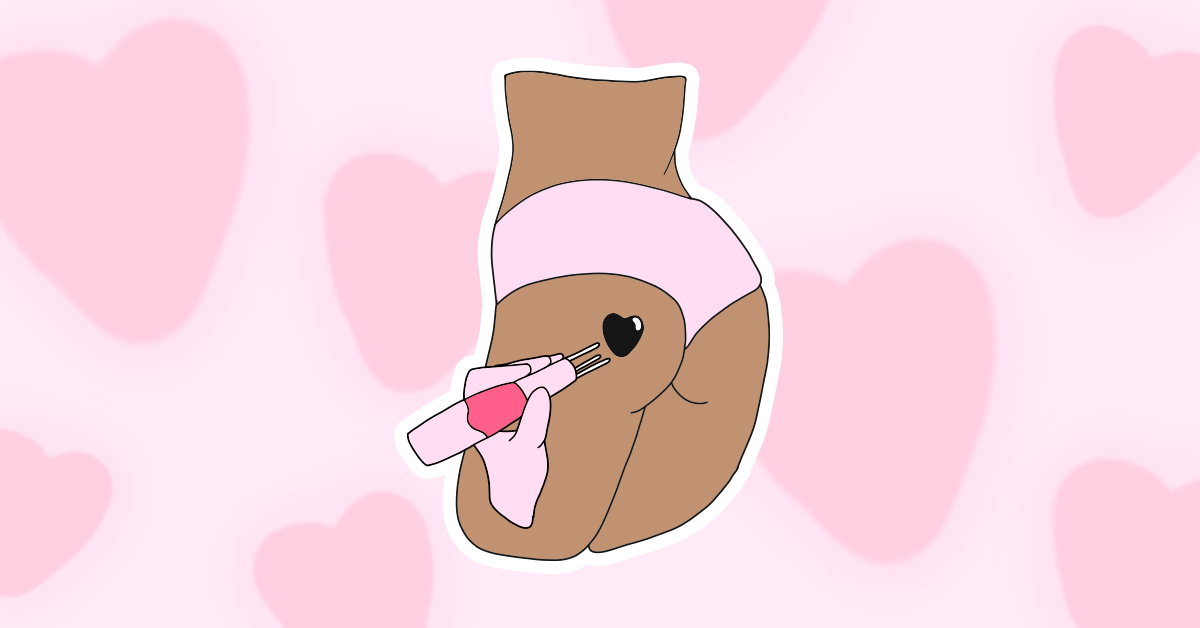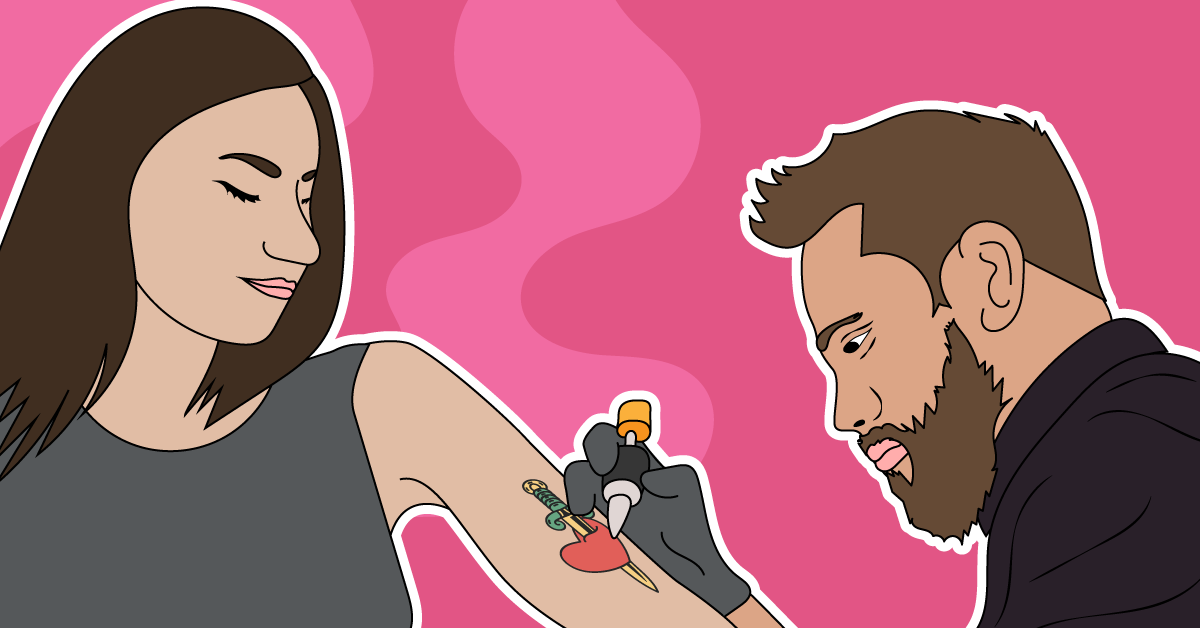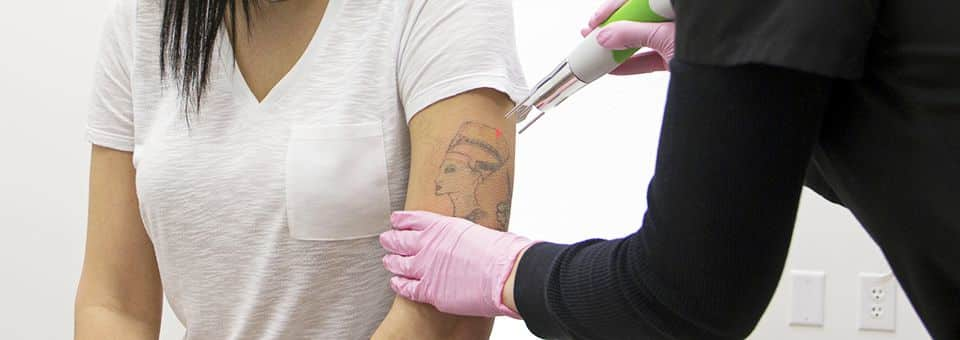Tattoo Removal
What Are The Hardest Tattoo's To Remove?
Tattoos are forever. But what if you want your tattoo gone? You’re not alone – in fact, 17% of people have considered tattoo removal. Years ago they had little hope of doing so. But today’s technology allows most people to go ahead and say goodbye to unwanted ink. Revolutionary advancements in laser technology can remove tattoos with little pain and effort. Even the most seemingly stubborn tattoos disappear with the latest innovations in laser technology, leaving that unsightly mistake nothing but a memory.
Nothing Short of Revolutionary
Laser tattoo removal works by targeting pigment colors in the skin’s dermis, the layer of skin between the epidermis and subcutaneous tissues. Light beams radiated by the laser are absorbed by tattoo pigments, which then fragment. The body then absorbs and eliminates the pigment fragments.
Compared to more traditional tattoo removal techniques (think chemical peels, excision, and dermabrasion) laser tattoo removal is safe, effective and relatively gentle. Other methods can permanently damage and irritate the skin and are largely ineffective because they can’t penetrate the skin’s deeper layers. Only laser technology can safely remove even the most stubborn tattoo pigments.
Because each tattoo is unique, removal techniques—including the type of laser used—must be tailored to your particular needs. Some tattoos are more difficult to remove than others.
What About Your Tattoo?
How will your tattoo fare under the laser’s beam? It depends on a number of factors.
Tattoo Ink
Black tattoos are the easiest to remove because the laser is able to target the black pigment more precisely. Other colors such as red, blues, and greens can become more difficult to remove depending whether the tattoos were amateur or professional. Green is the hardest color to remove followed by light blue. Neon colors are also incredibly difficult to remove, and typically require multiple treatments with the Ruby laser. As a general rule, the greater the contrast between the color of the tattoo pigment and your skin, the better the result.
Size of the Tattoo
The bigger a tattoo is, the longer it takes to remove. What’s hardest to remove? Large multi-colored tattoos are especially tricky because several different types of lasers have to be used to break down the different ink pigments. It takes at least five treatments to remove a small, simple black tattoo, and larger, more complex tattoos can require ten sessions or more. There’s also a waiting period of six to eight weeks between each laser removal appointment to allow your skin to heal, so if you want your tattoo gone right away, that’s not going to happen.
Smoker vs. Non-Smoker
When a laser breaks up tattoo pigments into tiny fragments, it is then absorbed and eliminated by the body’s natural immune response. Smoking affects the function of cells in the body which are in charge of removing the remaining ink material. Since smokers have poorer circulation and immune systems than non-smokers, healing in between sessions takes longer. If you’re a smoker, you may need to wait longer in between laser tattoo removal sessions, and you might not get optimal results.
Older vs. Newer Tattoos
Older tattoos generally fade more easily with laser treatments than newer ones. For instance, a black tattoo that is ten years old may take one or two treatments less than a one-year-old black tattoo. Why? Because the body has already absorbed some of the tattoo’s pigment throughout the years, making it easier to fade.
Layered Tattoos
If laser removal uncovers skin changes, you may be left with what looks like a “ghost” of your old tattoo. This is especially true for people who chose to tattoo over an undesirable tattoo. If you have one tattoo on top of an older one, extra laser treatments will probably be needed, and no results are guaranteed because there is likely to be a large amount of ink (ink from the new cover-up tattoo plus ink from the old tattoo).
Body Placement
Fading is generally slower for tattoos located farther down the arm or leg. These tattoos often require more laser treatment sessions and may demonstrate slower healing in-between sessions. Tattoos located on the back are the easiest to treat. As a rule of thumb, tattoos located closer to the heart are easiest to treat because they have good circulation and fast healing rates.
Professional vs. Amateur Tattoos
Amateur tattoos are usually easier to remove than professional tattoos. They typically have less ink deposited at varying depths, and therefore require fewer treatments. Exceptions occur when the ink is deep under the skin or scarring is present. Professional tattoos, on the other hand, have a more even amount of ink at a consistent depth. Most of the ink is located deeper in the skin than amateur tattoos, with more ink used. Professional tattoos often include colors that are difficult to remove as well.
Skin Color
Medium or fair skin and dark tattoos usually respond best to treatment. Why? Because the laser can selectively target ink. Darker skin tones may be more likely to experience hypopigmentation or keloid scarring. Don’t despair if you have darker skin, though. Laser tattoo removal is still possible on people with darker skin tones, but your physician must use lasers with specific wavelengths to minimize potential complications.
Don’t worry if your tattoo is large, multicolored, or layered, or if you have darker skin. The good news is that laser tattoo removal technology just keeps on getting better. Newer laser technologies such as the Nd:YAG and Q-switch can now effectively treat even the most stubborn tattoos.
Your First Laser Removal Session
Before a laser tattoo removal session, your physician will determine which type of laser to use and how many treatments you’ll need. The number of required treatments is based on the tattoo’s age, size, type, and pigment depth. Before determining an appropriate treatment plan, your physician will first test out the laser on your skin to see how it reacts.
Laser Tattoo Removal Treatment
Check out Brooke Hamner’s experience with getting her tattoo removed from her arm. No need to live with unwanted ink. For more information about our laser tattoo removal treatments visit http://nofuzz.la/1BXeoKf
Posted by LaserAway on Tuesday, June 9, 2015
So what happens during a laser tattoo removal treatment? Before the session starts a medical professional will apply an anesthetic cream, and you’ll be given protective eye gear to wear, along with a cooling device. The medical professional will then gently place a hand piece against your skin and deliver laser pulses to the tattoo pigment. With each laser pulse, most people experience a sensation similar to a rubber band snapping against their skin. The amount of laser pulses depends on the tattoo’s size, but most treatment sessions only last a few minutes.
You may experience minor bleeding, redness, swelling and blistering for several hours or days following treatment. The next several weeks may see the treated area flaking, peeling and scabbing. Handle the treatment site gently. While the site is healing, you should avoid sun exposure and public swimming pools. Once the skin has completely healed (usually four to six weeks after treatment), you can undergo additional sessions.
LaserAway Your Tattoos
There’s no other choice, really. Laser tattoo removal is the only safe and effective method to remove unwanted tattoos. After a series of successful laser treatments, most tattoos are pretty much gone. Keep in mind, however, that how fast your tattoo disappears depends on its color pigments, depth, and age. But even stubborn cases aren’t hopeless. Though colors such as yellow, green, or light blue are more difficult to remove, they can certainly be faded. The same goes for ink that rests deep within the dermis.
So what are you waiting for? Schedule your free, no-obligation laser tattoo removal consultation at LaserAway.


